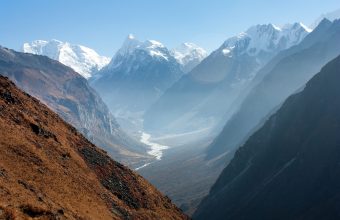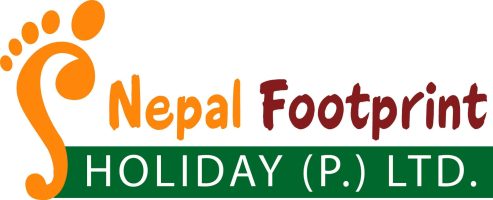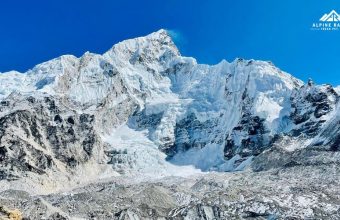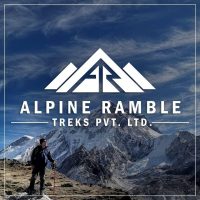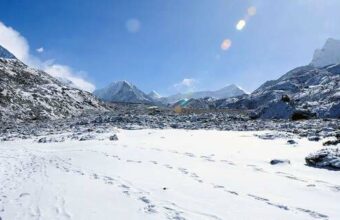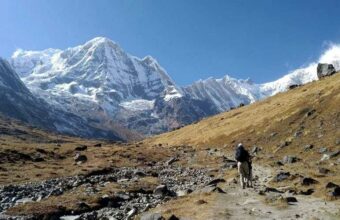The best time to trek in Nepal
When to go trekking in Nepal
When to go trekking in Nepal: Quick reference
In my opinion, the overall best time to go trekking in Nepal is from October to early November when the skies are crystal clear and the visibility is excellent.
October to April is the dry season, and this is generally a good time to trek in most of Nepal.
May to September is the monsoon season and trekking in most of the country is closed, with some notable exceptions.
Confusing? Read on!
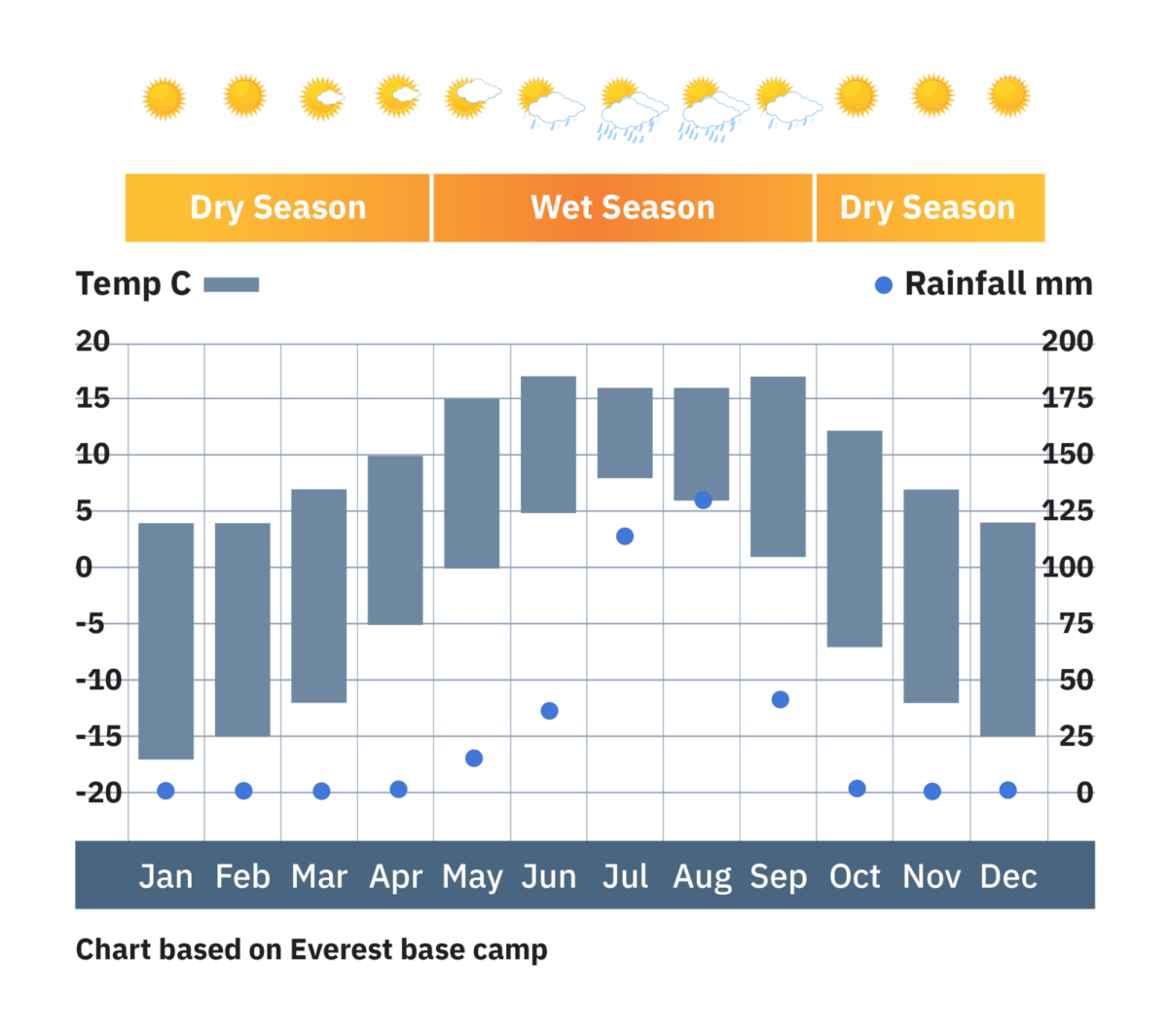
Nepal weather chart (Everest Base Camp)
The best time to go trekking in Nepal
Trekking conditions across the year
October to November is the most popular time to trek in Nepal, with the weather at its mildest and the temperatures manageable. However, routes can be busy during these months and trekking lodges full, so make sure you plan your stops in advance.
December to February is also an excellent time to trek, when trails are much quieter and visibility is still excellent. However, it can be bitterly cold up high, and some passes can be snowed in. Treks in the Annapurna region and to Everest Base Camp are still possible at this time.
March to early May can be another good time to trek. It’s much warmer up high, but uncomfortably hot lower down. Rhododendrons turn the slopes aflame with purples and reds. On the negative side, heat haze builds up and the air is less clear. The first pre-monsoon storm clouds build up and you’ll probably get soaked by intense thunderstorms.
Early May is a superb time to trek areas which lie in the Himalayan rain shadow. Trails in areas like Upper Mustang and Dolpo are quieter than in June to September, and the mountain views are better. By late May the thunderstorms become more frequent and it remains dangerously hot at lower levels.
In June the monsoon really starts to make its presence felt. In Nepal the torrential rain and massive thunderstorms last roughly from late-June to mid-September. For much of the country this is a very bad time to trek. Many trekking lodges will be closed, mountain views obscured, and trails become a quagmire of mud and leeches. However there are exceptions and places such as Upper Mustang which lie in the Himalayan rain shadow can still be trekked.
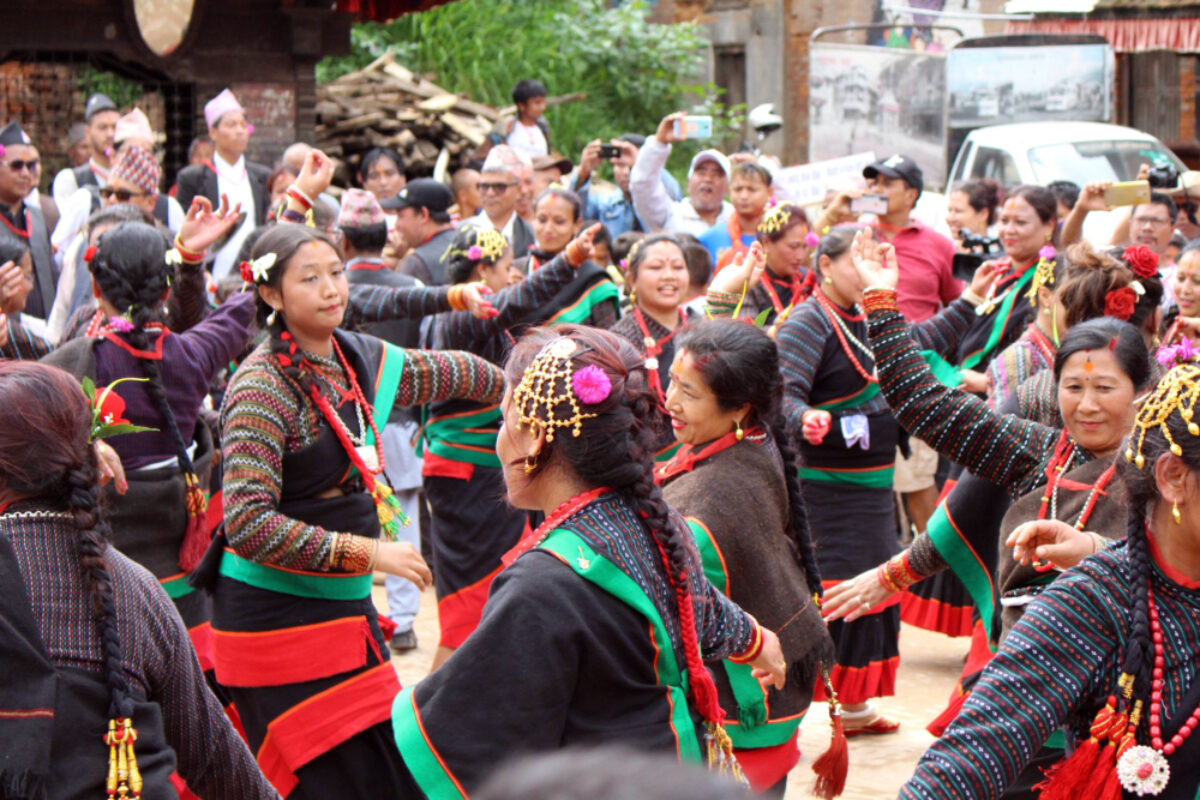
Events and holidays
Trekking in Nepal isn’t just about the mountain views and awe-inspiring passes. Along the way, trekkers will also pass through many Nepalese villages and interact with local communities. This is an opportunity to partake in Nepalese festivals and events.
Lasting 15 days between September and October, Dashain is the biggest cultural festival in Nepal. Celebrated by Hindus and Buddhists alike, this festival sees music, dancing, kite-flying and colourful processions of Hindu and Nepalese gods. A word of warning - animal sacrifice to appease the gods is a part of the festival.
October and November sees the Mani Rimdu festival, a 19-day event that culminates in a three-day public holiday. This is a great time to be trekking around Tengboche or to Everest base camp, as you’ll witness celebrations as local Sherpa and Tibetan communities join forces with Buddhist monks. You’ll witness folkloric dancing and singing, religious ceremonies and, if you’re lucky, the renowned mask dance at Tengboche monastery.
The pre-monsoon months of February and March sees Nepal welcome the Hindu Holi festival, a colourful celebration welcoming spring and the defeat of the Hindu demoness Holika. Join devotees in throwing coloured powder and water - but make sure to not wear your best clothes.

